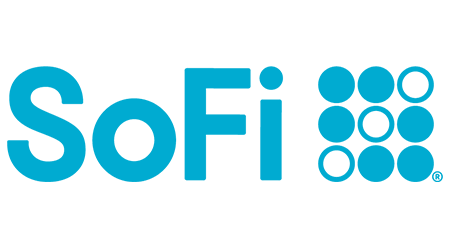
- 0.50% APY on checking balance
- Up to 3.60% APY on savings
- $0 account or overdraft fees
- Earn $50 or $300 when you sign up and set up eligible direct deposit
Traveling overseas involves a lot of planning — and that includes your money.
Travel money, for lack of a better term, essentially means the options of credit cards, debit cards, prepaid cards and foreign currency — all designed for travel and foreign transactions. Each form of travel money has different pros and cons, so you’ll want to compare and contrast before choosing which’ll be best for you and your itinerary.
Compare the fees, convenience, rewards and more between prepaid travel cards, credit cards, debit cards and foreign currency while planning how you’re going to pay for food, souvenirs and other goods on your next trip.
| Prepaid travel card | Credit card | Debit card | Foreign cash | |
|---|---|---|---|---|
| Foreign transaction fees | No | Sometimes | Sometimes | No |
| Currency exchange fees | Yes — but the rate is locked in | Yes | Yes | Yes |
| ATM withdrawal fees | Sometimes | Sometimes | Not usually | N/A |
| Currency load fee | Yes | N/A | N/A | N/A |
| Instant reload (no delay) | Yes | N/A | N/A | N/A |
| Worldwide acceptance | Yes | Yes — except for select countries, like Cuba and North Korea | Yes | Yes |
| Chip & pin protection | Yes | Yes | Yes | N/A |
| Emergency card replacement | Yes | Yes | No | N/A |
| Backup cards | Yes | No | No | N/A |
| Mobile application | Yes | Yes | Yes | N/A |
| Reward points | Yes | Yes | Sometimes | No |
| Frequent flyer benefits | No | Yes | No | No |
| Promotional interest rates (0% purchases, 0% balance transfers) | No | Yes | No | N/A |
Prepaid travel cards, credit cards and debit cards can all be effective ways to pay while you’re traveling. In fact, a combination of the three might be the safest and most convenient way to have all your bases covered. But the travel money you should embrace as your primary payment method depends on your situation:
Browse travel credit cards to find an option with perks that match your travel style — just make sure you have a plan to pay it off.



Prepaid travel money cards are great for budgeting, since you can only spend what’s already on the card — but that could actually be a drawback in the event of an emergency.
Many travel debit cards waive foreign transaction fees and ATM withdrawal fees, setting you up for an easy breeze experience — as long as you don’t overdraw your checking account.
Traveler’s checks were once a widely used form of travel money, but they’re going the way of the dinosaur. You can weigh up whether they’re worth your time below — but we’d advise looking elsewhere.
Pros
Cons
Comprehensive guide to using debit cards overseas
Holding a certain amount of foreign cash provides you with convenience and payment flexibility. Some stops on your destination may be cash-only and having extra on you can provide a smooth transition to wherever your destination may be.
Knowing how the dollar has performed against foreign currency in the past few years and months will enable you to get the best exchange rate for your foreign exchange transaction. Our travel money guides will inform you on some of the ways to access cash and ATMs worldwide.
Yes! In fact, it’s usually safer to travel with some cash than none at all — though you don’t need to take large sums along with you. To keep your cash safe while traveling, avoid keeping it all in one place. Instead, divide it between your suitcase, purse and other safe places so that if some gets stolen you still have backup cash.
Keep in mind that carrying more than $10,000 at a time could actually be a headache, since you’ll need to declare it on your customs form to explain why you’re traveling with so much money.
The best place to exchange your foreign currency is at your bank or credit union BEFORE you travel.
But if you’re already in a foreign destination, your best bet is to use a travel debit card to withdraw funds at an ATM.
Airport kiosks and currency exchange stores should only be used as a last resort.
For your next international trip, plan ahead by knowing how much to bring, and which travel money option is best for you. Choose your destination to get the full guide:
How to pay, how much to bring and travel money suggestions for your trip to USA.
How to pay, how much to bring and travel money suggestions for your trip to New Zealand.
How to pay, how much to bring and travel money suggestions for your trip to Thailand.
How to pay, how much to bring and travel money suggestions for your trip to Vietnam.
How to pay, how much to bring and travel money suggestions for your trip to Mexico.
How to pay, how much to bring and travel money suggestions for your trip to Portugal.
How to pay, how much to bring and travel money suggestions for your trip to Germany.
How to pay, how much to bring and travel money suggestions for your trip to Ecuador.
How to pay, how much to bring and travel money suggestions for your trip to Canada.
How to pay, how much to bring and travel money suggestions for your trip to Japan.
My son did some work overseas and was paid in Macedonian Denars. He’s having a terrible time getting this exchanged to US money.
Where can he do this?
Hi Foxtrotrn,
Thank you for reaching out to finder.
Macedonian Denar is a closed currency which is a currency that you can only get in the country of origin and that is the reason why it is quite difficult to have it exchanged to US dollars.
The options that you have for foreign currency exchange are:
– International exchange kiosks which can be found in airports
– Banks
– Online foreign exchange companies such as World First, XE and other similar companies which offer exchange services online
I hope this helps.
Cheers,
Charisse
Can I get dirhams–Moroccan currency–from any Chase branches?
Hi Vinita,
Thanks for your inquiry. Please note that we are not affiliated with Chase or any company we feature on our site and so we can only offer you general advice.
Yes, Chase offers international money transfers including dirhams. Aside from using your bank, you can also compare currency exchange companies that you can use to save on your next exchange.
Best regards,
Rench